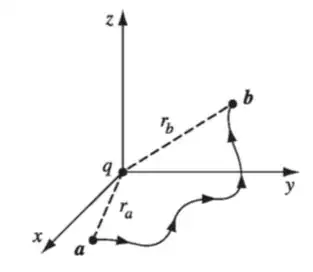Griffiths makes the following argument in his book.
Looking first at a point charge at the origin using Coulomb’s Law:

$$ \int_a^b \mathbf{E}\cdot \text d\mathbf{l} = \frac{1}{4\pi\epsilon_0}\left( \frac{q}{r_a} - \frac{q}{r_b}\right)$$
That equals zero when $r_a$ = $r_b$. Then combining that result (given the fact that it holds true for any reference point not just the origin) with the principle of superposition, you could prove that it holds true for any charge distribution.
So even though you can talk about the divergence of D in terms of free charge, there is still no Coulomb’s Law type equation relating it to free charge so this integral doesn’t necessarily hold:
$$ \int_a^b \mathbf{D}\cdot \text d\mathbf{l} \ne \frac{1}{4\pi\epsilon_0}\left( \frac{q_f}{r_a} - \frac{q_f}{r_b}\right)$$
